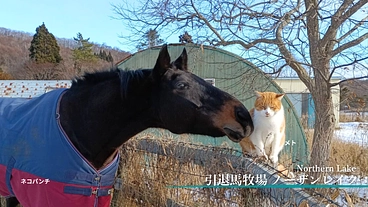
寄付総額
目標金額 5,000,000円
- 寄付者
- 674人
- 募集終了日
- 2025年7月31日
応援メッセージ④米国ラッコ研究者Davis教授「ラッコ:回復、課題、そして海の健康における役割」

Texas A&M大学海洋生物学部のRandall Davis教授より,
"Sea Otters: Recovery, Challenges, and Their Role in Ocean Health" 「ラッコ:回復、課題、そして海の健康における役割」
というタイトルで執筆いただきました!
Davis教授は三谷が日本学術振興会海外特別研究員だった時の受け入れ研究者です.当時,アラスカでのラッコ調査に連れて行ってくれて,「こんな近くで観察して調査ができるのか!」とびっくりした覚えがあります.私が北海道大学に職を得てから,招聘研究者としてお招きし,一緒に北海道東部のラッコ調査に行ってもらいました.そこで研究手法を伝授してもらったので,現在,私たちはアラスカでの研究と同じ方法で調査を実施しています.
書いていただいた記事はこちらから!(和訳も載せました)
Sea otters are one of the ocean’s most charismatic and ecologically important animals (Fig. 1). Once hunted nearly to extinction during the fur trade of the 18th and 19th centuries, their numbers dropped from about 300,000 to fewer than 2,000. Thanks to international protections and decades of conservation efforts, sea otters now number around 150,000 and have returned to many parts of their historical range from Russia and Alaska to California. Yet, full recovery and long-term sustainability remain works in progress (Fig. 2).
ラッコは、海の中でとても魅力的で、生態系にとって大切な動物のひとつです(図1)。18世紀から19世紀の毛皮貿易によって、ラッコの数は約30万頭からわずか2,000頭以下にまで減ってしまいました。しかし、国際的な保護と長年の努力により、現在では15万頭ほどにまで回復し、ロシアやアラスカ、カリフォルニアなど、かつての生息地の多くに戻ってきています。しかし、完全な回復と長期的な持続可能性の実現には、まだ課題が残っています(図 2)。
Sea otters are protected under federal laws in the United States and Canada, and conservation organizations around the world support their recovery. Sea otters are protected from intentional capture in Japan by the “Law of Hunting Control of Sea Otters and Fur Seals,” where they occur in very low numbers in northern Hokkaido. Still, large parts of their former territory remain unoccupied. As scientists continue to study these animals, they’ve identified several major questions that need to be answered to ensure the successful management and restoration of sea otter populations.
ラッコは、米国およびカナダの連邦法で保護されており、世界中の保護団体が回復を支援しています。日本では北海道の一部に少数が生息しており、「臘虎膃肭獣猟獲取締法」で守られています。しかし、ラッコが住んでいた広い地域の多くはいまだに空白のままです。科学者たちは、この動物について研究を続けており、ラッコの個体群の管理と回復を成功させるためには、いくつかの重要な課題があることが明らかになっています。
One important issue is how to define a sea otter “population.” Otters live in small home ranges and don’t travel far, which means that their populations are spread out and vary from place to place. Understanding how far sea otters disperse is crucial because it affects how populations grow and how genetics are shared between groups. New tagging technologies are needed to study these movements in more detail.
たとえば、「ラッコの個体群」とは何を意味するのか、という点です。ラッコはあまり遠くまで移動せず、限られた範囲で生活します。そのため、個体群は広範囲に分散し,場所によって異なると考えられます。ラッコがどの程度分散しているかを把握することは、個体数の増加や群間の遺伝子の共有に影響を与えるため、非常に重要です。これを詳しく知るには、新しい追跡技術が必要です。
Another critical question is what limits sea otter populations. Food availability is a significant factor—sea otters eat about 25% of their body weight in prey like clams, urchins, and crabs every day. When they move into new areas, these prey populations often shrink. In some cases, otters reach the limits of what their habitat can support, known as the carrying capacity. Monitoring how much time otters spend foraging and what they eat helps scientists understand when a population is nearing that limit.
もう 1 つの重要な問題は、ラッコの個体数を制限する要因です。餌の入手可能性は重要な要素です。ラッコは、毎日、体重の約 25% にあたるアサリ、ウニ、カニなどの餌を食べます。ラッコが新しい地域に移動すると、これらの餌の個体数はしばしば減少します。一部のケースでは、ラッコは生息環境が支えられる限界、いわゆる「環境収容力」に達します。ラッコが餌を探し回る時間や摂取する餌の種類をモニタリングすることで、科学者は個体群がその限界に近づいているかどうかを判断できます。
Sea otters are famous for their role as a keystone predator—they help keep ecosystems like kelp forests healthy. By eating sea urchins, which graze on kelp, otters help kelp forests thrive, supporting more fish, birds, and other marine life. However, reintroducing sea otters to areas where they’ve been absent for over a century has complex effects. While they can help restore ecosystems, they also compete with commercial shellfish fisheries. Understanding these trade-offs is essential for managing both sea otters and coastal economies.
ラッコは「キーストーン捕食者」と呼ばれ、昆布の森などの生態系を健康に保つ役割を担っています。たとえば、ウニを食べることで昆布が過剰に食べられるのを防ぎ、昆布の森を守ります。これにより、多くの魚や鳥、他の海の生き物が安心して暮らせるようになります。一方で、ラッコの再導入が貝類漁業と競合してしまうこともあります。商業やレクリエーション、地域の食料として行われる漁業では、ラッコと同じ貝やカニをターゲットにしているため、対立が生じやすいのです。特にアラスカやカナダの一部地域では、これが大きな問題になっています。
Long-term monitoring of sea otters is necessary to track their health and movements. Different regions use different methods to count otters, which makes comparisons difficult. Standardizing monitoring techniques and coordinating efforts internationally would help scientists detect trends and understand the causes behind population changes.
ラッコの健康状態や移動を追跡するには、長期的なモニタリングが必要です。ラッコの頭数を数える方法は地域によって異なり、比較が困難です。モニタリング手法を標準化し、国際的に連携することで、科学者は傾向を把握し、個体数変動の原因を理解しやすくなるでしょう。
Translocating sea otters—moving them to new habitats—has helped their recovery. In the 1960s and 70s, sea otters were successfully reintroduced to Southeast Alaska, British Columbia, and Washington. These efforts increased population numbers and genetic diversity. Today, about 30% of all sea otters live in these translocated populations. Still, thousands of kilometers of coastline remain without otters, and new translocations could help restore both the species and the coastal ecosystems they support.
ラッコを新しい生息地に移す「移入」は、その回復に貢献しています。1960年代から70年代にかけて、ラッコはアラスカ南東部、ブリティッシュコロンビア、ワシントン州に再導入され、成功を収めました。これらの取り組みにより、個体数と遺伝的多様性が向上しました。
今ではラッコ全体の約3割が、移送によって定着した集団に属しています。それでも、数千キロメートルに及ぶ海岸線にはラッコがいない状態が続き、新たな個体移動が、この種と彼らが支える沿岸生態系の回復に役立つ可能性があります。
Not all interactions between sea otters and people are positive. As otters reclaim their former habitats, they often come into conflict with fisheries that depend on shellfish. Sea otters eat many of the same invertebrates harvested by commercial, recreational, and subsistence fishers. These conflicts are especially sharp in places like Alaska and British Columbia. While laws prevent large-scale killing of otters, better planning and predictive models could help manage these conflicts more effectively.
ラッコと人間との関わりは、すべて良いものばかりではありません。ラッコがかつての生息地を取り戻すにつれて、貝類を漁業資源とする漁業と対立することがよくあります。ラッコは、商業、レクリエーション、生計のための漁業で捕獲される無脊椎動物の多くを餌としています。このような対立は、アラスカやブリティッシュコロンビアなどの地域で特に深刻です。法律によりラッコの大規模な捕殺は禁じられていますが、より優れた計画と予測モデルにより、こうした対立をより効果的に管理することができるでしょう。
On the other hand, sea otters provide significant benefits. Their role in restoring kelp forests can help stabilize coastlines, capture carbon, and boost biodiversity. There is also growing interest in ecotourism related to sea otters. Research is needed to fully understand and quantify these benefits so they can be considered in conservation decisions.
一方、ラッコは大きな恩恵をもたらしています。ラッコは、昆布の森の回復に重要な役割を果たしており、海岸線の安定化、炭素の吸収、生物多様性の促進に貢献しています。また、ラッコに関するエコツーリズムへの関心も高まっています。これらの恩恵を完全に理解し、定量的に評価して、保護に関する意思決定に反映させるためには、さらなる研究が必要です。
Sea otters themselves are not immune to predation. In some areas, especially the Aleutian Islands and California, their populations have been affected by killer whales and white sharks. These predators can slow or even reverse recovery. In California, shark bites have become a leading cause of otter deaths, halting the northward expansion of the population. In Alaska, killer whales have reduced otter numbers by more than 90% in some areas.
ラッコ自身も捕食の対象となっています。アリューシャン列島やカリフォルニアなどの一部の地域では、シャチやホオジロザメによってその個体数が減少しています。これらの捕食者は、ラッコの回復を遅らせたり、さらには回復を逆転させる可能性もあります。カリフォルニアでは、サメによる咬傷がラッコの死因のトップとなり、個体数の北への拡大が停滞しています。アラスカでは、シャチによって一部の地域ではラッコの個体数が 90% 以上減少しています。
Protecting habitats where otters can avoid predators—and possibly moving individuals between isolated populations—might be important strategies for keeping genetic diversity high and supporting recovery. However, doing so will require better tracking of otter movements and more research into how predators shape otter behavior.
ラッコが天敵から逃れることができる生息地を保護し、孤立した個体群の間で個体を移動させることは、遺伝的多様性を維持し、回復を支援するための重要な戦略となる可能性があります。ただし、これを行うためには、ラッコの移動を正確に追跡する仕組みの確立と、天敵がラッコの行動に与える影響に関するさらなる研究が不可欠です。
In conclusion, sea otters are making a remarkable comeback, but their journey is far from over. Continued research, international cooperation, and thoughtful management will be necessary to ensure their survival and the health of the coastal ecosystems they help maintain. Their story is one of both challenge and hope—and a reminder of the critical connections between species, people, and the sea.
結論として、ラッコは目覚ましい復活を遂げていますが、その道のりはまだ長いものです。ラッコの生存と、ラッコが維持する沿岸生態系の健全性を確保するためには、継続的な研究、国際協力、そして慎重な管理が必要でしょう。ラッコの物語は、挑戦と希望に満ちたものであり、生物種、人間、そして海との重要なつながりを私たちに再認識させるものです。

Fig. 1. Sea otter feeding on a California sea cucumber (Apostichopus californicus). Image by R. Davis taken under the authority of U.S. Fish and Wildlife Service LOC MA-043219.
図 1. マナマコ(Apostichopus californicus)を餌を食べるラッコ。米国魚類野生生物局(U.S. Fish and Wildlife Service)の許可を得て、R. Davisが撮影。LOC MA-043219。
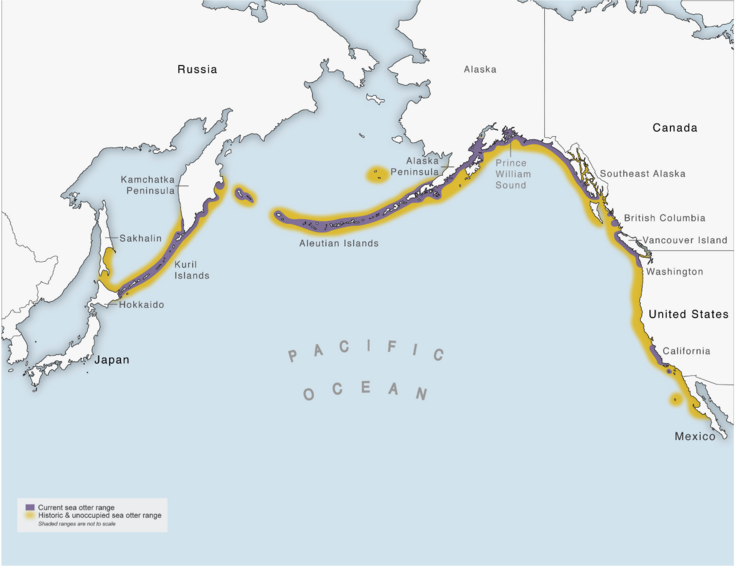
Fig. 2. Current (purple) and historic (yellow) sea otter range.
図2.ラッコの分布.現在(紫)と過去(黄).
ギフト
3,000円+システム利用料
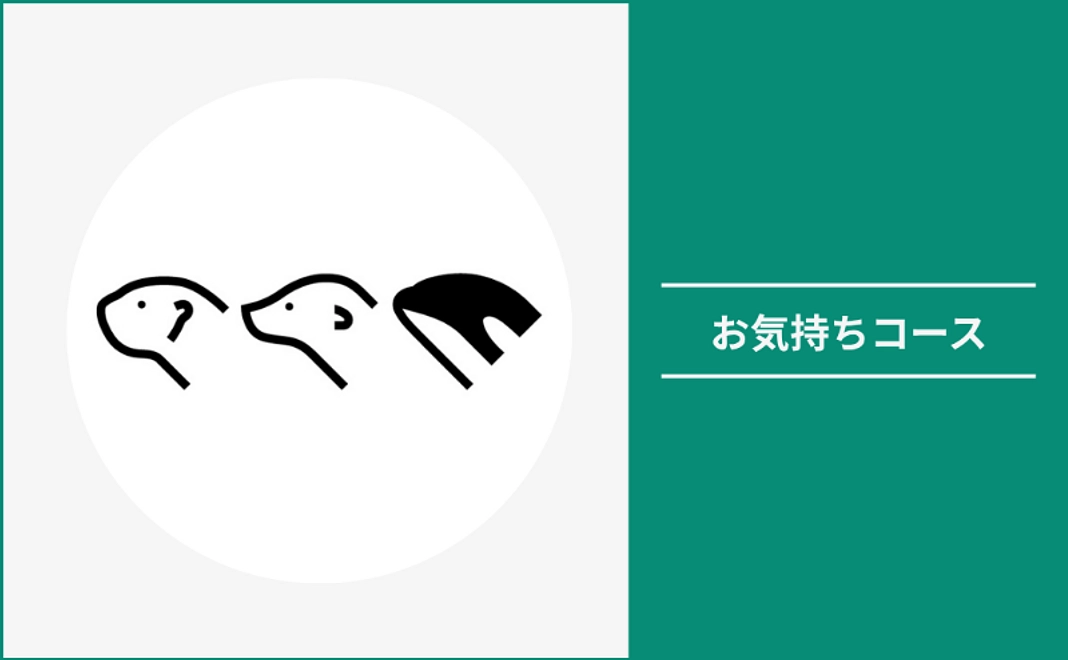
お気持ちコース
●お礼のメール
●寄付金領収書
●PC壁紙(シャチ、ラッコ、ゴマフアザラシ、グリーンランドの4種)
●大学HPにご芳名掲載(希望制)
- 申込数
- 181
- 在庫数
- 制限なし
- 発送完了予定月
- 2027年3月
10,000円+システム利用料
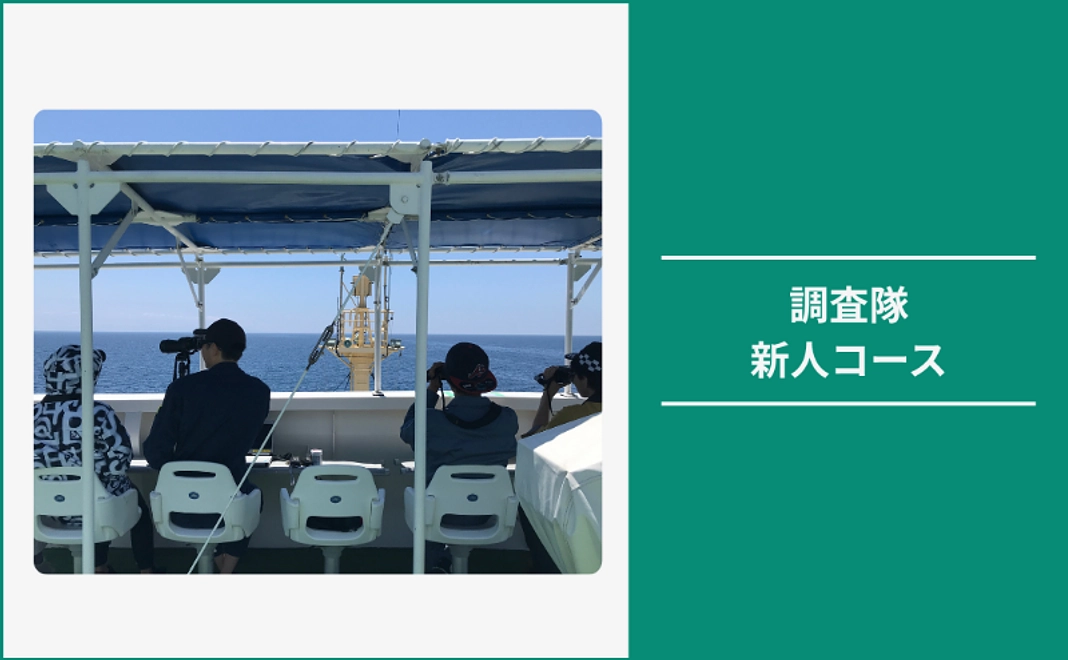
調査隊 新人コース
●京大WRC海獣班ロゴステッカー
●調査報告書
対象の海棲哺乳類全種のダイジェスト版をお届けします。
=====
●お礼のメール
●寄付金領収書
●PC壁紙(シャチ、ラッコ、ゴマフアザラシ、グリーンランドの4種)
●大学HPにご芳名掲載(希望制)
- 申込数
- 110
- 在庫数
- 制限なし
- 発送完了予定月
- 2027年3月
3,000円+システム利用料

お気持ちコース
●お礼のメール
●寄付金領収書
●PC壁紙(シャチ、ラッコ、ゴマフアザラシ、グリーンランドの4種)
●大学HPにご芳名掲載(希望制)
- 申込数
- 181
- 在庫数
- 制限なし
- 発送完了予定月
- 2027年3月
10,000円+システム利用料

調査隊 新人コース
●京大WRC海獣班ロゴステッカー
●調査報告書
対象の海棲哺乳類全種のダイジェスト版をお届けします。
=====
●お礼のメール
●寄付金領収書
●PC壁紙(シャチ、ラッコ、ゴマフアザラシ、グリーンランドの4種)
●大学HPにご芳名掲載(希望制)
- 申込数
- 110
- 在庫数
- 制限なし
- 発送完了予定月
- 2027年3月

絶滅の危機に瀕しているシマアオジ 彼らのいる景色を取り戻したい
#国際協力
- 現在
- 4,166,400円
- 寄付者
- 343人
- 残り
- 20時間

野生に帰れない猛禽類のために|猛禽類医学研究所マンスリーサポーター
- 総計
- 523人
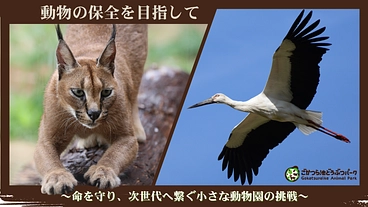
ごかつら池どうぶつパーク|命を守り、次世代へ繋ぐ小さな動物園の挑戦
- 現在
- 5,604,000円
- 支援者
- 344人
- 残り
- 36日

物価高でごはん食べられない若者に今すぐ食糧を|緊急支援2025冬
- 現在
- 11,807,000円
- 寄付者
- 310人
- 残り
- 29日

救う命を選ばない。どんな犬猫も保護し続け福岡の里親さんを増やしたい
#動物
- 現在
- 3,003,000円
- 支援者
- 282人
- 残り
- 1日

国立科学博物館マンスリーサポーター|地球の宝を守りつづける
- 総計
- 679人

老病ねこたちが最後まで安心して過ごせるおうちを守っていきたい!
- 現在
- 1,893,000円
- 支援者
- 143人
- 残り
- 8日
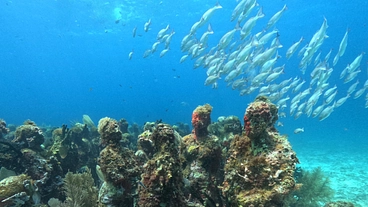
カリブ海の綺麗な海を体験してほしい!!
- 支援総額
- 1,120,000円
- 支援者
- 30人
- 終了日
- 6/6

長野県の被爆者に願いを聞き取り、未来につなげたい!
- 支援総額
- 1,082,000円
- 支援者
- 162人
- 終了日
- 9/29
故郷シリア難民キャンプの人々に日本製中古車椅子を贈りたい!
- 支援総額
- 969,000円
- 支援者
- 42人
- 終了日
- 5/31

韓国の芸能人ご用達のK-Beautyブランド「Nmade」日本初出店!
- 支援総額
- 1,660,000円
- 支援者
- 70人
- 終了日
- 2/28

経済的困難を抱える子どもたちの学びを応援してください!
- 総計
- 3人

体操・新体操の情報を毎日発信する取材・報道活動を続けたい!
- 支援総額
- 1,082,000円
- 支援者
- 104人
- 終了日
- 2/10

ローカルの仲間たちと地方から「豊かさ」を考える“知の拠点”をつくる
- 支援総額
- 1,400,000円
- 支援者
- 116人
- 終了日
- 7/4




